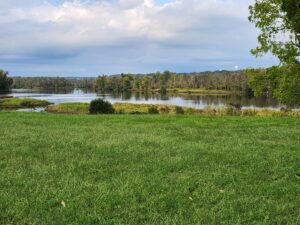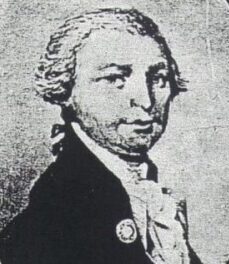Arrival of the English
Early European exploration of the Chesapeake Bay region began in the mid 1500s. In 1561 a Spanish exploration party kidnapped Paquiquineo (believed to have been Opechancanough, brother of Wahunsonacock, Chief Powhatan), possibly a member of either the Kiskiack or Paspahegh people of Virginia. After bringing Spain attempted to set up a Jesuit mission at a location known as Ajacan, believed to have been located somewhere on Virginia’s middle peninsula. Within a year, the mission was massacred by indians of the Powhatan Confederacy. Spain continued to have an interest in Virginia though did not attempt to settle the area again.
In 1587, England attempted to establish a colony on the Outer Banks of North Carolina at Roanoke Island. This colonization attempt failed miserably and has been lost to history. There is some belief that some members of the Roanoke Colony made their way up to the Chesapeake region and settled with the Chesapeake tribe. Chief Powhatan’s priests prophesied that a great nation would spring forth from the Chesapeake that would supplant the Powhatan Confederacy. Acting upon this prophecy, Chief Powhatan is said to have killed these remnants of the Lost Colony and the Chesapeake’s with whom they lived on the eve of the settlement of Jamestown.
In 1607, English colonists landed and settled at the site they named for their King, Jamestown. It is with the English establishment of a colony here in Virginia that the recorded story of Conjurer’s Neck and Old Brick House began. Captain John Smith, the famed soldier of fortune and one time leader of the colony at Jamestown, almost immediately began making explorations of the Chesapeake and many of its tributaries. In the fall of 1608, Smith made one of his voyages and discovered the Appomattox River, passing by and visited the sites of present-day Petersburg, Colonial Heights, Matoaka, and Ettrick. In his General History published in 1624, Smith writes “Long he stayed not, but fitting himself and Captain Waldo with two barges, from Chawopoweanock, and all parts thereabouts all the people were fled, as being jealous of our intents, till we discovered the river and people of Apamatuck, where we found not much.”

Bermuda Hundred, about 15 miles from Old Brick House, was founded by Sir Thomas Dale in 1613. On March 22, 1622, Powhatan Indians attacked English settlements up and down the James River. Jamestown was spared as the fortified town was warned shortly before the attack. The outlying settlements did not receive that warning and somewhere around 347 colonists, approximately on-fourth of the colony, were killed in the attacks. Colonists at Bermuda Hundred, not far from where Old Brick House now sits, were killed. John Rolfe, who had married Pocahontas, had a plantation at or near Bermuda Hundred and he numbered among those killed.
“Conjurer’s Field” is established
The land that would become Conjurer’s Neck and Old Brick House was first patented on December 1, 1620 by Charles Magnor who received 650 acres of land at “Conjurer’s Field”. Magnor also had land on the south side of the James River in present-day Prince George County. Magnor sold Conjurer’s Field to William Hayward of Causey’s Clere (present-day Hopewell) in 1634. Wayward increased the acreage of Conjurer’s Neck in 1642 by adding 130 acres and repatenting the tract as 750 acres. Hayward maintained ownership of Conjurer’s Neck until 1652, when he sold it to Christopher Robinson.
